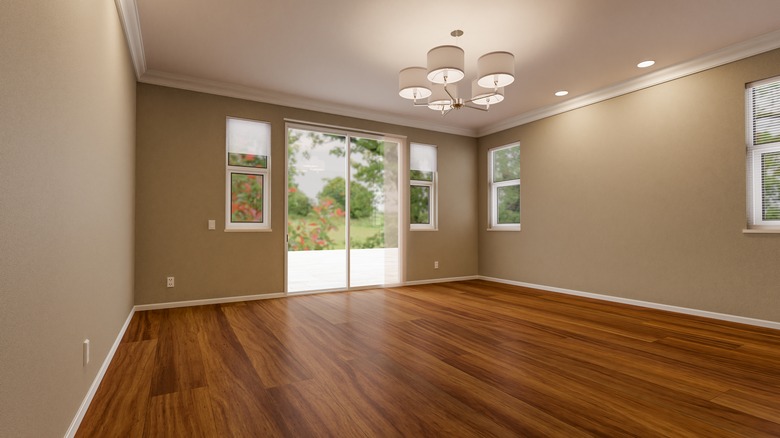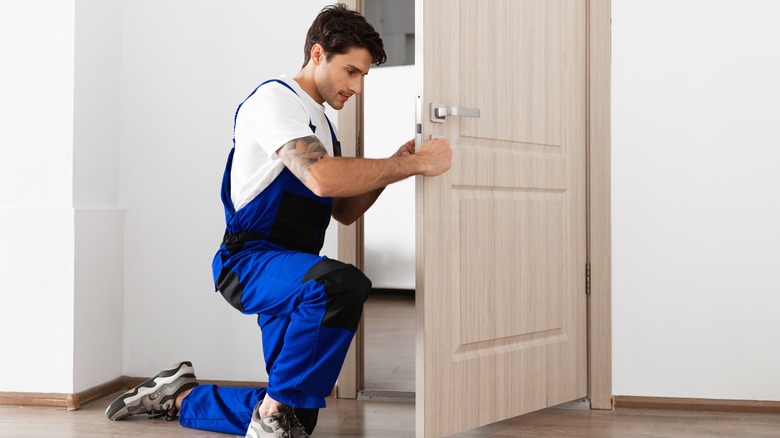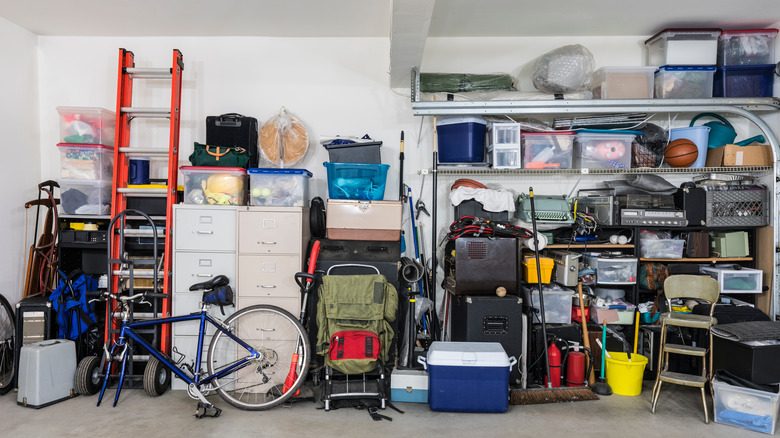4 Mistakes You Should Avoid When Staging Your Home
Moving is such a big decision, and the details can be overwhelming whether you've done it once or a dozen times. Just as you're trying to get all your possessions out the door, your realtor/friend/neighbor is indicating that you need to stage your house to make it more attractive to potential buyers. According to Travelers, many people simply hire a professional stager, which is usually a plus factor for selling. A stager is someone with the eye of an interior designer but with a minimalist approach because the house should retain a neutral feel while it's in transition.
There are a lot of rules for staging, and moving is emotional; we get it. So we've curated a basic list that lays out the most important factors to address even in the middle of packing, changing utility bills, and swapping out house keys. Here are four ideas or categories to think about in order to make your home as enticing, as welcoming, and as buyer friendly as possible. Finally, rather than yet another to-do list, we've made this more of a what-not-to-do list, so it's easier to avoid these potential mistakes.
1. Showing an empty house
This may be the most vital thing to consider when selling a home. As Storeys, a real estate news site, indicates, don't let potential buyers walk through a completely empty house for lots of reasons. Interior designers will tell you that while some people may be good at color matching or placing accessories, they're bad at gauging scale. Most of us need furniture in an interior to give us perspective. In addition, the rooms look smaller in a house that's empty, devoid of basics.
Also, an empty house, no matter how neat and clean, will seem cold and impersonal, and worse, blank floors and walls will allow potential buyers to focus on minor flaws rather than concentrating on the home's potential. Finally, just as realtors and stagers will advise a seller to declutter and remove accessories and smaller pieces of furniture out of a room, they will also advise leaving a few pieces so buyers can get their heads around how their things might fit inside.
2. Dirty rooms or broken items
Dust, dirt, stains, and broken permanent fixtures such as lights, windows, or a cracked bathroom finish simply scream neglect. In addition, The National Association of Realtors indicates that broken or dirty walls or ceilings may impact the size of the offer you receive on the house. Consequently, it's important that your home presents itself as pristine, tidied, and repaired as possible.
In many areas, especially urban and suburban areas in the US, a whole-house inspection is needed before the property can go on the market. If you live in one of these areas, you may receive a list of items needing repair, as indicated by a professional inspector. Realtor.com describes how a complete home inspection may not be a bad idea, even if it's not required. Sellers often have to address these items (or fix them themselves) before the inspector clears the sale.
Whether you opt for a home inspection or not, be sure not to leave a dirty, messy house behind when you leave. Hire a professional cleaning team if you have to, but making your house sparkle will help you get top dollar for it in the market.
3. Allowing clutter
How many articles have we read about getting rid of clutter? And although that directive means different things to different people, LD Design Co, a Dallas-area staging firm, says to remove items that offer an additional layer onto the bones of the house. This is a bit counter-intuitive, but the design of your bathroom will show better by taking away the bathmat, for example. The same for the kitchen — remove towels and placemats. Get down to the basics, and then add back in one or two features that allow the room to shine, maybe a small potted plant or a soap dispenser.
Coldwell Banker Blue Matter points out that having too much stuff in too many places makes a room look smaller. Even a closet or shelf can look inadequate for the task if it's jammed with too many items. It's a tough job but commit to purging by donating items to charitable organizations or friends and family to keep unwanted but usable items out of landfills.
4. Displaying personal items
There are several important reasons to remove personal items from a house that's on the market. As The Denver Post points out, you need to get rid of family photos from the walls, most personal items like posters and trophies, and all the personal touches you can find from the kitchen to the main bath, primary bedroom, and beyond. Most potential buyers don't know you, and really, they don't want to know you. So, remove all the personal belongings from the rooms so a buyer can picture their things in your soon-to-be-former place.
Investopedia agrees. Their take is that to get a quick sale, you need to think about staging as visual merchandising — everything neat and tidy and as appealing as possible, even if you don't live like that every day. They add that staging is not decorating. Staging is about making the house as appealing as possible to the widest number of potential buyers while decorating is all about taking a space and making it your own personal haven. Experts agree that, in general, staging a house is a way to have it sell faster and possibly get a higher price for a beautiful and well-maintained home.




